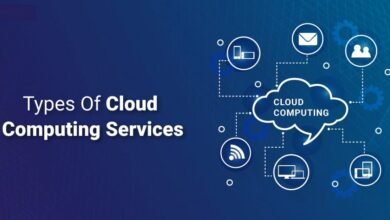Cloud Architecture: A Guide to Design and Architect Your Cloud
Expert guide to cloud architecture design patterns, multi-cloud strategies, and containerization. Master AWS, Azure, GCP architecture with proven frameworks and best practices.

In today’s rapidly evolving digital landscape, cloud architecture has become the cornerstone of successful enterprise transformation and scalability. As organizations increasingly migrate their operations to the cloud, the need for robust, scalable, and efficient cloud architecture design has never been more critical. Cloud architecture represents the strategic blueprint that defines how cloud computing resources, services, and infrastructure components work together to deliver powerful, flexible, and cost-effective solutions.
Modern cloud architecture encompasses much more than simply moving applications to the cloud. It involves carefully designing systems that leverage the full potential of cloud platforms like AWS, Azure, and Google Cloud Platform (GCP) to achieve unprecedented levels of scalability, reliability, and performance. The evolution of cloud architecture patterns has introduced sophisticated approaches, including microservices architecture, serverless computing, containerization with Kubernetes, and multi-cloud strategies that enable organizations to build resilient, future-ready systems.
Understanding cloud architecture is essential for businesses seeking to optimize costs, enhance security, improve operational efficiency, and accelerate innovation. Whether you’re developing cloud-native applications, implementing hybrid cloud solutions, or designing edge computing infrastructures, the principles and patterns of effective cloud architecture provide the foundation for success. This comprehensive guide explores the fundamental concepts, design patterns, best practices, and emerging trends that define modern cloud architecture, empowering you to architect cloud solutions that drive business value and competitive advantage.
Understanding Cloud Architecture Fundamentals
What is Cloud Architecture?
Cloud architecture refers to the comprehensive design framework that outlines how cloud computing resources, services, and components are organized and integrated to support business applications and processes. It encompasses the strategic planning and implementation of cloud infrastructure, including compute resources, storage systems, networking components, and security mechanisms that work together to deliver scalable and reliable cloud solutions.
Modern cloud architecture involves multiple layers of abstraction, from Infrastructure as a Service (IaaS) foundations to Platform as a Service (PaaS) environments and Software as a Service (SaaS) applications. The architecture defines how these layers interact, communicate, and scale to meet changing business demands while maintaining performance, security, and cost-effectiveness.
Core Components of Cloud Architecture
Cloud architecture consists of several fundamental components that work together to create robust cloud environments:
Frontend Platform: The user interface and client-side components that users interact with, including web applications, mobile apps, and desktop clients. This layer handles user authentication, data presentation, and client-side processing while connecting securely to backend services.
Backend Platform: The server-side infrastructure that processes business logic, manages data operations, and coordinates with various cloud services. This includes application servers, database management systems, API gateways, and microservices that handle core business functionality.
Cloud-Based Delivery: The networking and delivery mechanisms that ensure reliable, high-performance access to cloud services. This encompasses Content Delivery Networks (CDNs), load balancers, API management, and edge computing capabilities that optimize service delivery globally.
Network Infrastructure: The underlying connectivity framework that includes virtual private clouds (VPCs), subnets, security groups, firewalls, and network gateways that ensure secure, scalable communication between cloud components.
Cloud Service Models and Architecture Patterns
Understanding the relationship between cloud service models and architecture patterns is crucial for effective cloud design:
Infrastructure as a Service (IaaS) provides the foundational layer where organizations have maximum control over virtual machines, storage systems, and networking configurations. Cloud architecture at this level focuses on resource optimization, auto-scaling, and disaster recovery planning.
Platform as a Service (PaaS) abstracts infrastructure management, allowing developers to focus on application development and deployment. Cloud architecture patterns for PaaS emphasize containerization, CI/CD pipelines, and automated deployment strategies.
Software as a Service (SaaS) represents fully managed applications where cloud architecture considerations center on API integration, data synchronization, and single sign-on (SSO) implementations.
Cloud Architecture Design Patterns
Microservices Architecture Pattern
Microservices architecture represents a transformative cloud architecture pattern that breaks down monolithic applications into smaller, independently deployable services. This cloud architecture design approach enables organizations to achieve greater agility, scalability, and resilience in their cloud-native applications.
In microservices architecture, each service is designed to handle specific business functions and can be developed, deployed, and scaled independently. This cloud architecture pattern aligns perfectly with containerization technologies like Docker and orchestration platforms like Kubernetes, enabling efficient resource utilization and simplified maintenance.
Key benefits of microservices architecture include improved fault isolation, technology diversity, team autonomy, and the ability to scale individual services based on demand. Organizations implementing this cloud architecture pattern can achieve faster deployment cycles, better resource optimization, and enhanced system reliability.
Serverless Architecture Pattern
Serverless computing has emerged as a revolutionary cloud architecture pattern that eliminates the need for traditional server management while providing automatic scaling and pay-per-use pricing models. This cloud architecture design approach enables developers to focus entirely on writing code without worrying about underlying infrastructure management.
Serverless architecture leverages services like AWS Lambda, Azure Functions, and Google Cloud Functions to execute code in response to events. This cloud architecture pattern is particularly effective for building event-driven architectures, API backends, and data processing pipelines that require dynamic scaling capabilities.
The serverless architecture pattern offers significant advantages including reduced operational overhead, automatic scaling, cost optimization, and faster time-to-market for new applications. Organizations adopting this cloud architecture approach can achieve substantial cost savings while improving development productivity.
Event-Driven Architecture Pattern
Event-driven architecture represents a sophisticated cloud architecture pattern that enables loose coupling between system components through asynchronous event communication. This cloud architecture design approach is essential for building responsive, scalable systems that can handle complex business processes and real-time data processing requirements.
In event-driven architecture, components communicate through events that represent state changes or significant occurrences within the system. This cloud architecture pattern utilizes message queues, event streams, and publish-subscribe mechanisms to ensure reliable, scalable event processing across distributed systems.
Event-driven architecture excels in scenarios requiring real-time processing, integration between multiple systems, and handling unpredictable workload patterns. This cloud architecture approach enables organizations to build resilient systems that can adapt to changing business requirements while maintaining high performance and availability.
Multi-Cloud Architecture Pattern
Multi-cloud architecture has become an essential cloud architecture pattern for organizations seeking to optimize performance, reduce vendor lock-in, and enhance resilience across different cloud platforms. This cloud architecture design approach involves strategically distributing workloads across multiple cloud providers like AWS, Azure, and Google Cloud Platform.
Multi-cloud architecture enables organizations to leverage the unique strengths of different cloud providers while maintaining flexibility and avoiding dependency on a single vendor. This cloud architecture pattern is particularly valuable for companies operating in multiple geographic regions, those requiring specific compliance requirements, or organizations seeking to optimize costs across different cloud services.
Implementing multi-cloud architecture requires careful planning around data integration, security consistency, network connectivity, and operational management. Organizations successful with this cloud architecture approach often utilize containerization, infrastructure as code, and unified monitoring solutions to manage complexity across multiple cloud environments.
Cloud Platforms and Services
Amazon Web Services (AWS) Architecture
AWS remains the leading cloud platform, offering comprehensive services for implementing sophisticated cloud architecture solutions. AWS architecture provides extensive options for compute services including EC2 instances, Lambda functions, and container services through ECS and EKS. The AWS ecosystem excels in providing mature cloud architecture components that support complex enterprise workloads.
AWS architecture patterns commonly utilize services like S3 for scalable storage, RDS for managed databases, CloudFront for content delivery, and VPC for network isolation. The platform’s comprehensive cloud architecture offerings enable organizations to build everything from simple web applications to complex multi-tier architectures with advanced security and compliance features.
AWS provides extensive cloud architecture frameworks including the Well-Architected Framework that guides organizations in building secure, high-performing, resilient, and efficient infrastructure. This framework emphasizes five pillars: operational excellence, security, reliability, performance efficiency, and cost optimization in cloud architecture design.
Microsoft Azure Architecture
Microsoft Azure has established itself as a formidable cloud architecture platform, particularly for organizations already invested in Microsoft technologies. Azure architecture seamlessly integrates with existing Microsoft ecosystems while providing robust cloud-native capabilities for modern application development and deployment.
Azure architecture excels in hybrid cloud scenarios, offering services like Azure Arc that extend Azure services to on-premises and multi-cloud environments. The platform provides comprehensive cloud architecture solutions including Azure Kubernetes Service (AKS) for container orchestration, Azure Functions for serverless computing, and Azure Service Fabric for microservices architecture.
Azure architecture particularly shines in enterprise scenarios requiring integration with Active Directory, Office 365, and other Microsoft services. The platform’s cloud architecture approach emphasizes security, compliance, and governance features that make it attractive for large organizations with complex regulatory requirements.
Google Cloud Platform (GCP) Architecture
Google Cloud Platform brings unique strengths to cloud architecture, particularly in areas of artificial intelligence, machine learning, and big data processing. GCP architecture leverages Google’s expertise in handling massive scale operations while providing innovative cloud-native services for modern application development.
GCP architecture excels with services like Google Kubernetes Engine (GKE) for container orchestration, BigQuery for data analytics, Cloud Run for serverless containers, and Anthos for hybrid and multi-cloud management. The platform’s cloud architecture approach emphasizes simplicity, performance, and cost-effectiveness.
Google Cloud Platform is particularly strong in cloud architecture scenarios involving data analytics, machine learning workloads, and containerized applications. The platform’s commitment to open-source technologies and Kubernetes makes it attractive for organizations prioritizing cloud-native development approaches.
Containerization and Kubernetes
Container Technology in Cloud Architecture
Containerization has revolutionized cloud architecture by providing lightweight, portable, and consistent deployment units that can run reliably across different environments. Container technology addresses many challenges associated with traditional cloud architecture approaches by encapsulating applications with their dependencies, ensuring consistent behavior from development through production.
Docker containers have become the standard for packaging applications in cloud architecture, providing isolation, resource efficiency, and portability across different cloud platforms. This containerization approach enables organizations to implement sophisticated cloud architecture patterns including microservices, continuous deployment, and hybrid cloud strategies.
The impact of containerization on cloud architecture extends beyond simple application packaging. Containers enable more efficient resource utilization, faster deployment cycles, simplified scaling operations, and improved consistency across development, testing, and production environments.
Kubernetes Orchestration
Kubernetes has emerged as the de facto standard for container orchestration in cloud architecture, providing sophisticated capabilities for managing containerized applications at scale. Kubernetes architecture abstracts underlying infrastructure complexity while providing powerful tools for deployment, scaling, service discovery, and load balancing.
Kubernetes enables advanced cloud architecture patterns including auto-scaling, rolling deployments, service mesh integration, and multi-cloud portability. The platform’s declarative approach to infrastructure management aligns perfectly with Infrastructure as Code practices, enabling consistent and reliable cloud architecture implementations.
Organizations implementing Kubernetes in their cloud architecture benefit from improved resource utilization, enhanced application reliability, simplified operations, and greater flexibility in cloud platform selection. Kubernetes compatibility across AWS EKS, Azure AKS, and Google GKE enables true multi-cloud portability for containerized workloads.
Container Security and Management
Security considerations in containerized cloud architecture require specialized approaches that address the unique challenges of container environments. Container security encompasses image security, runtime protection, network segmentation, and access control mechanisms that ensure safe operation of containerized applications in cloud environments.
Cloud architecture security for containers involves implementing image scanning, vulnerability management, runtime monitoring, and compliance enforcement across the container lifecycle. Leading cloud platforms provide integrated container security services that complement Kubernetes native security features.
Effective container management in cloud architecture requires comprehensive strategies for image registry management, deployment automation, monitoring and logging, and resource governance. Organizations successful with containerized cloud architecture typically implement centralized management platforms that provide visibility and control across multiple Kubernetes clusters and cloud environments.
Multi-Cloud and Hybrid Cloud Strategies
Multi-Cloud Architecture Benefits
Multi-cloud architecture has become a strategic imperative for organizations seeking to maximize the benefits of cloud computing while minimizing risks associated with vendor lock-in. This cloud architecture approach enables organizations to leverage the unique strengths of different cloud providers while maintaining flexibility and resilience across their technology stack.
Key benefits of multi-cloud architecture include improved reliability through geographic and vendor diversification, cost optimization through competitive pricing strategies, and enhanced performance by selecting optimal cloud services for specific workloads. Organizations implementing multi-cloud strategies can also avoid vendor lock-in while gaining access to specialized services from different cloud platforms.
Multi-cloud architecture enables organizations to implement sophisticated disaster recovery strategies, comply with data sovereignty requirements, and optimize application performance by deploying workloads in optimal cloud regions. This cloud architecture approach requires careful planning around data integration, security consistency, and operational management across multiple cloud environments.
Hybrid Cloud Implementation
Hybrid cloud architecture represents a sophisticated approach that combines on-premises infrastructure with public cloud services to create flexible, scalable, and cost-effective IT environments. This cloud architecture pattern enables organizations to maintain sensitive workloads on-premises while leveraging cloud services for scalability, innovation, and cost optimization.
Successful hybrid cloud implementation requires robust connectivity solutions, consistent security policies, and unified management approaches that span both on-premises and cloud environments. Leading cloud platforms provide specialized services like AWS Outposts, Azure Stack, and Google Anthos that facilitate seamless hybrid cloud architecture deployment.
Hybrid cloud architecture is particularly valuable for organizations with regulatory requirements, legacy system dependencies, or variable workload patterns that benefit from the flexibility of combining on-premises and cloud resources. This approach enables gradual cloud migration strategies while maintaining operational continuity.
Inter-Cloud Connectivity and Management
Managing connectivity and operations across multi-cloud and hybrid cloud environments presents unique challenges that require specialized cloud architecture solutions. Inter-cloud connectivity involves establishing secure, high-performance network connections between different cloud platforms and on-premises environments.
Cloud architecture for multi-cloud environments requires standardized approaches to identity management, security policies, monitoring, and compliance that work consistently across different cloud platforms. Organizations often implement cloud management platforms that provide unified visibility and control across their entire cloud ecosystem.
Effective multi-cloud and hybrid cloud management relies on containerization, Infrastructure as Code, API-driven automation, and centralized monitoring solutions that abstract platform-specific differences while maintaining operational consistency. This cloud architecture approach enables organizations to realize the full benefits of multi-cloud strategies while managing operational complexity.
Cloud Security Architecture
Security-First Design Principles
Cloud security architecture must be designed with security as a fundamental principle rather than an afterthought, implementing zero-trust architecture models that assume no inherent trust within cloud environments. This cloud architecture approach requires comprehensive security controls at every layer, from network security and identity management to data protection and application security.
Modern cloud security architecture emphasizes defense in depth strategies that implement multiple layers of security controls including network segmentation, encryption at rest and in transit, access controls, vulnerability management, and continuous monitoring. This comprehensive approach ensures that security breaches in one area don’t compromise the entire cloud architecture.
Cloud security architecture must also address compliance requirements specific to different industries and geographic regions. This involves implementing audit trails, data governance policies, privacy controls, and regulatory compliance mechanisms that ensure cloud architectures meet stringent security and legal requirements.
Identity and Access Management
Identity and Access Management (IAM) forms the cornerstone of cloud security architecture, providing centralized control over user authentication, authorization, and resource access across cloud environments. Effective IAM implementation in cloud architecture requires sophisticated policies that enforce least privilege access principles while maintaining operational efficiency.
Cloud IAM architectures typically implement single sign-on (SSO), multi-factor authentication (MFA), role-based access control (RBAC), and attribute-based access control (ABAC) mechanisms that provide granular control over cloud resource access. These security mechanisms are essential for maintaining security in complex multi-cloud and hybrid cloud environments.
Advanced cloud security architecture approaches increasingly utilize identity federation, privileged access management, and just-in-time access capabilities that provide dynamic, context-aware security controls. These approaches enable organizations to maintain security while supporting the flexibility and scalability requirements of modern cloud architectures.
Data Protection and Compliance
Data protection in cloud architecture requires comprehensive strategies that address data classification, encryption, access controls, backup and recovery, and data lifecycle management. These security measures must be implemented consistently across all components of cloud architecture while maintaining performance and operational efficiency.
Cloud architecture security for data protection involves implementing encryption at multiple levels including data at rest, data in transit, and data in use. This requires coordination between cloud platform security services, application-level encryption, and key management systems that ensure comprehensive data protection.
Compliance requirements in cloud architecture often mandate specific data residency, audit capabilities, privacy controls, and regulatory reporting mechanisms. Organizations must design cloud architectures that not only meet current compliance requirements but can also adapt to evolving regulatory landscapes across different jurisdictions and industries.
Performance Optimization and Monitoring
Cloud Performance Architecture
Cloud performance architecture requires strategic design decisions that optimize application performance, resource utilization, and cost effectiveness across cloud environments. This involves implementing performance monitoring, auto-scaling, load balancing, and caching mechanisms that ensure optimal cloud architecture performance under varying load conditions.
Effective cloud performance architecture utilizes Content Delivery Networks (CDNs), edge computing, database optimization, and application performance monitoring (APM) tools that provide comprehensive visibility into cloud architecture performance metrics. These technologies enable proactive performance management and rapid issue resolution.
Cloud architecture performance optimization requires continuous monitoring and tuning of compute resources, storage systems, network connectivity, and application configurations. Organizations successful in cloud performance management implement automated optimization tools and AI-driven analytics that continuously improve cloud architecture efficiency.
Monitoring and Observability
Cloud monitoring and observability form critical components of successful cloud architecture, providing comprehensive visibility into system health, performance metrics, and operational status across all cloud components. Modern cloud architecture monitoring requires sophisticated tools that can handle the complexity and scale of distributed cloud systems.
Observability in cloud architecture encompasses metrics collection, log aggregation, distributed tracing, and real-time alerting capabilities that provide deep insights into cloud system behavior. This comprehensive approach enables organizations to understand complex cloud architecture interactions and rapidly identify performance bottlenecks or security issues.
Advanced cloud monitoring architectures implement AI-powered anomaly detection, predictive analytics, and automated remediation capabilities that can proactively address issues before they impact cloud architecture performance. These intelligent monitoring solutions are essential for managing the complexity of modern multi-cloud and containerized environments.
Cost Optimization Strategies
Cloud cost optimization requires strategic cloud architecture approaches that balance performance, security, and functionality requirements with cost constraints. This involves implementing resource right-sizing, auto-scaling, reserved instance planning, and spot instance utilization strategies that maximize cloud architecture cost efficiency.
Cloud architecture cost optimization utilizes cost monitoring tools, budget alerts, resource tagging, and chargeback mechanisms that provide visibility and accountability for cloud spending. Organizations successful in cloud cost management implement governance frameworks that ensure cloud resources are used efficiently and cost-effectively.
Advanced cloud cost optimization strategies leverage serverless computing, containerization, multi-cloud pricing arbitrage, and automated resource management tools that continuously optimize cloud architecture costs while maintaining performance and availability requirements.
Emerging Trends and Future of Cloud Architecture
AI and Machine Learning Integration
Artificial Intelligence and Machine Learning integration represents a transformative trend in cloud architecture, with AI/ML workloads requiring specialized cloud infrastructure that can handle massive computational requirements and complex data processing pipelines. Modern cloud platforms provide sophisticated AI/ML services that integrate seamlessly with cloud architecture components.
Cloud architecture for AI/ML applications requires careful consideration of data pipeline design, model training infrastructure, inference scaling, and GPU optimization strategies. Leading cloud providers offer specialized services like AWS SageMaker, Azure Machine Learning, and Google AI Platform that simplify AI/ML deployment in cloud environments.
The future of AI-driven cloud architecture includes intelligent auto-scaling, predictive maintenance, automated security response, and cost optimization capabilities that leverage machine learning to continuously improve cloud architecture performance and efficiency. These AI-powered capabilities will become essential for managing increasingly complex cloud environments.
Edge Computing and Cloud Architecture
Edge computing represents a significant evolution in cloud architecture, bringing computational capabilities closer to data sources and end-users to reduce latency and improve performance. Edge computing architectures require integration between centralized cloud services and distributed edge infrastructure that can operate autonomously while maintaining connectivity to cloud platforms.
Cloud architecture for edge computing involves implementing lightweight containerization, edge orchestration, data synchronization, and security mechanisms that can operate effectively in resource-constrained edge environments. This requires specialized cloud architecture patterns that can handle intermittent connectivity and variable resource availability.
The convergence of edge computing and cloud architecture enables new applications in IoT, autonomous vehicles, industrial automation, and real-time analytics that require ultra-low latency and high reliability. Organizations implementing edge-cloud architectures must carefully balance computational distribution, data management, and security requirements across edge and cloud components.
Quantum Computing and Cloud Services
Quantum computing represents an emerging frontier in cloud architecture, with leading cloud providers beginning to offer quantum computing services that can be integrated with traditional cloud architectures. While still in early stages, quantum computing promises to revolutionize certain computational problems including cryptography, optimization, and scientific simulation.
Cloud architecture integration with quantum computing requires new approaches to hybrid classical-quantum algorithms, quantum error correction, and quantum-classical data exchange mechanisms. Early quantum cloud services from providers like IBM Quantum, AWS Braket, and Google Quantum AI provide accessible platforms for quantum computing experimentation and development.
The future impact of quantum computing on cloud architecture will likely include quantum-enhanced security, optimization algorithms, and simulation capabilities that can solve problems currently intractable with classical computing. Organizations should begin exploring quantum computing potential while preparing cloud architectures for eventual quantum integration.
Conclusion
Cloud architecture has evolved from a simple technology adoption strategy to a fundamental business enabler that drives digital transformation, operational efficiency, and competitive advantage across industries. The comprehensive exploration of cloud architecture design patterns, multi-cloud strategies, containerization with Kubernetes, and emerging trends like AI/ML integration and edge computing demonstrates the critical importance of strategic cloud architecture planning in today’s technology landscape. Organizations that master cloud architecture principles, implement robust security frameworks, optimize performance and costs, and stay ahead of emerging trends will be best positioned to leverage the full potential of cloud computing for sustainable business success. As cloud technology continues to evolve with innovations in quantum computing, serverless architectures, and AI-driven automation, the foundation of well-designed cloud architecture will remain essential for organizations seeking to build resilient, scalable, and future-ready digital infrastructures that can adapt to changing business requirements and technological advancements.










